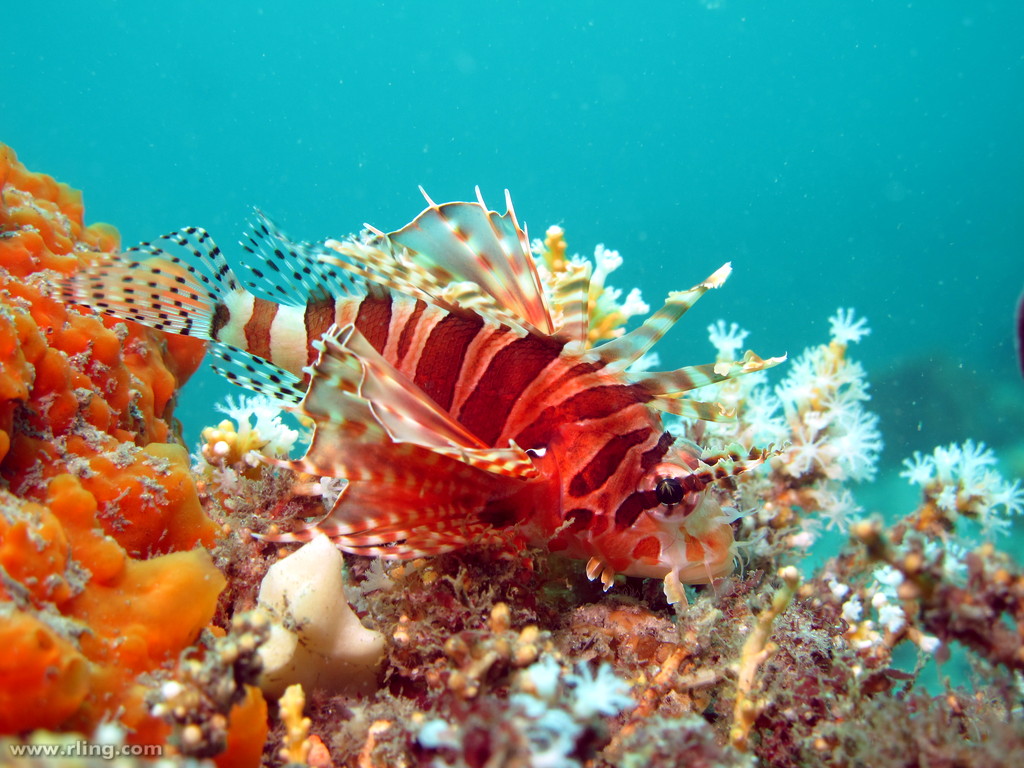15 Facts About Zebra Lionfish
The zebra lionfish is a truly unique and exotic saltwater fish. With their striking black and white striped pattern, long showy fins, and venomous spines, these fish stand out in any marine aquarium.
Here are 15 fascinating facts you may not know about the zebra lionfish:
Introduction
The zebra lionfish (Dendrochirus zebra) is a marine fish belonging to the scorpionfish family. It is native to the tropical Indo-Pacific region and is popular in the saltwater aquarium trade for its beautiful appearance.
With its graceful, flowing fins and intense black and white coloration, the zebra lionfish is considered one of the most ornate members of the lionfish group.
Below we’ll explore some key facts about the natural history, biology, and captive care of this stunning fish. Understanding the needs of this species is crucial for keeping them healthy in home aquariums.
Facts About Zebra Lionfish

1. Impressive Fins
One of the most distinctive features of the zebra lionfish are its large, fan-like pectoral fins. These fins can reach up to half of the fish’s body size and are used to stunning visual effect. When threatened, the fish will often spread its fins in an intimidating display.
2. Venomous Spines
While beautiful to behold, zebra lionfish have 18 venomous spines along their backs and undersides. The spines contain a protein-based venom that can cause extreme pain and swelling in humans. Lionfish should be handled with caution by experienced aquarists only.
3. Nocturnal Hunters
Zebra lionfish are nocturnal predators that use their expansive fins to corner prey at night. They will consume small fish and invertebrates. Maintaining a healthy population of feeder shrimp in the aquarium is important.
4. Slow-Moving
Despite having a fierce appearance, zebra lionfish are relatively slow-moving fish. They ambush their prey rather than chasing it down. Their striking fins are used primarily for display rather than propulsion.
| Fact | Description |
|---|---|
| Scientific Name | Dendrochirus zebra |
| Average Size | 12 inches |
| Diet | Carnivore |
| Temperament | Peaceful |
5. Peaceful by Nature
While menacing in appearance, captive-bred specimens are quite peaceful by nature when kept with tank mates too large to be eaten. However, they may become territorial towards smaller lionfish species.
6. Hardy Species
Thanks to generations of captive breeding, the zebra lionfish is quite hardy compared to other marine fish. They can tolerate a wide range of water conditions which makes them ideal for beginner saltwater aquarists.
7. Origins in the Indo-Pacific
Zebra lionfish are native to the tropical Indo-Pacific region including the Philippines, Indonesia, Micronesia, and the Great Barrier Reef of Australia. They inhabit shallow lagoons and outer reef slopes.
8. Depth Range
In the wild, they are found between 3 to 50 meters deep but are most abundant in shallow reef habitats less than 12 meters deep. This puts them well within recreational SCUBA diving limits.
9. Reproduction via Pelagic Larvae
Unlike some species that brood their young, zebra lionfish release pelagic larvae into the ocean currents. The larvae develop as they drift in the plankton, eventually settling to the seafloor to mature.
10. Unique Hunting Strategy
Zebra lionfish are crepuscular predators with a unique hunting strategy. At dusk and dawn they stir up the sandy bottom with their fins, then ambush any critters thus exposed.
11. Dietary Variety Needed
In home aquariums, zebra lionfish should be fed a varied carnivorous diet including meaty items like shrimp, krill, silversides, and marine fish fillet. Vitamin-enriched foods are essential.
12. Social Yet Territorial
While peaceful towards tankmates too large to eat, zebra lionfish can be territorial towards their own kind. It is best to keep just one individual unless you have an exceptionally large tank.
13. Sensitive to Water Conditions
Despite their hardy reputation, zebra lionfish do require stable, high-quality water conditions to truly thrive. Key parameters like salinity, pH, and nitrates should be carefully monitored.
14. Long Lifespan
Thanks to excellent captive breeding programs, the average lifespan of a zebra lionfish is 8-10 years. Some specimens have reportedly lived over 15 years in aquariums given proper care.
15. Conservation Status: Least Concern
Due to their broad distribution, large population sizes, and lack of major threats, zebra lionfish are listed as Least Concern on the IUCN Red List of Threatened Species.
Conclusion
With its flowing fins, venomous spines, and striking black-and-white coloration, the zebra lionfish is one of the most charismatic members of the scorpionfish family. While an advanced aquarist’s fish, their unique beauty and hardy nature makes them a popular showcase species.
By understanding the natural history and care requirements of the zebra lionfish, aquarists can keep them healthy and highlight their most dramatic qualities in home saltwater aquariums. With proper feeding and tank maintenance, these fish can thrive for over a decade.
So consider adding one of these exotic-looking fish to your collection. Just be sure to admire their graceful fins and hypnotic patterns from a safe distance!






